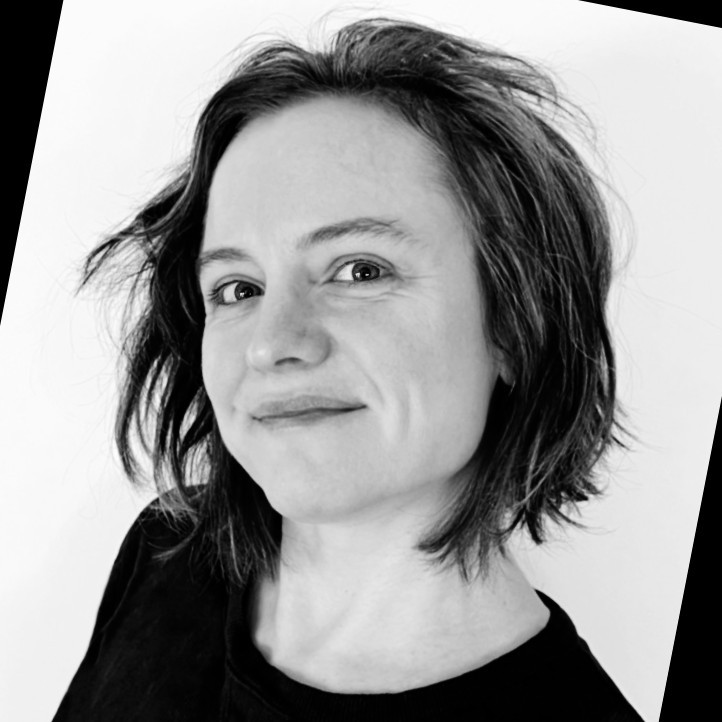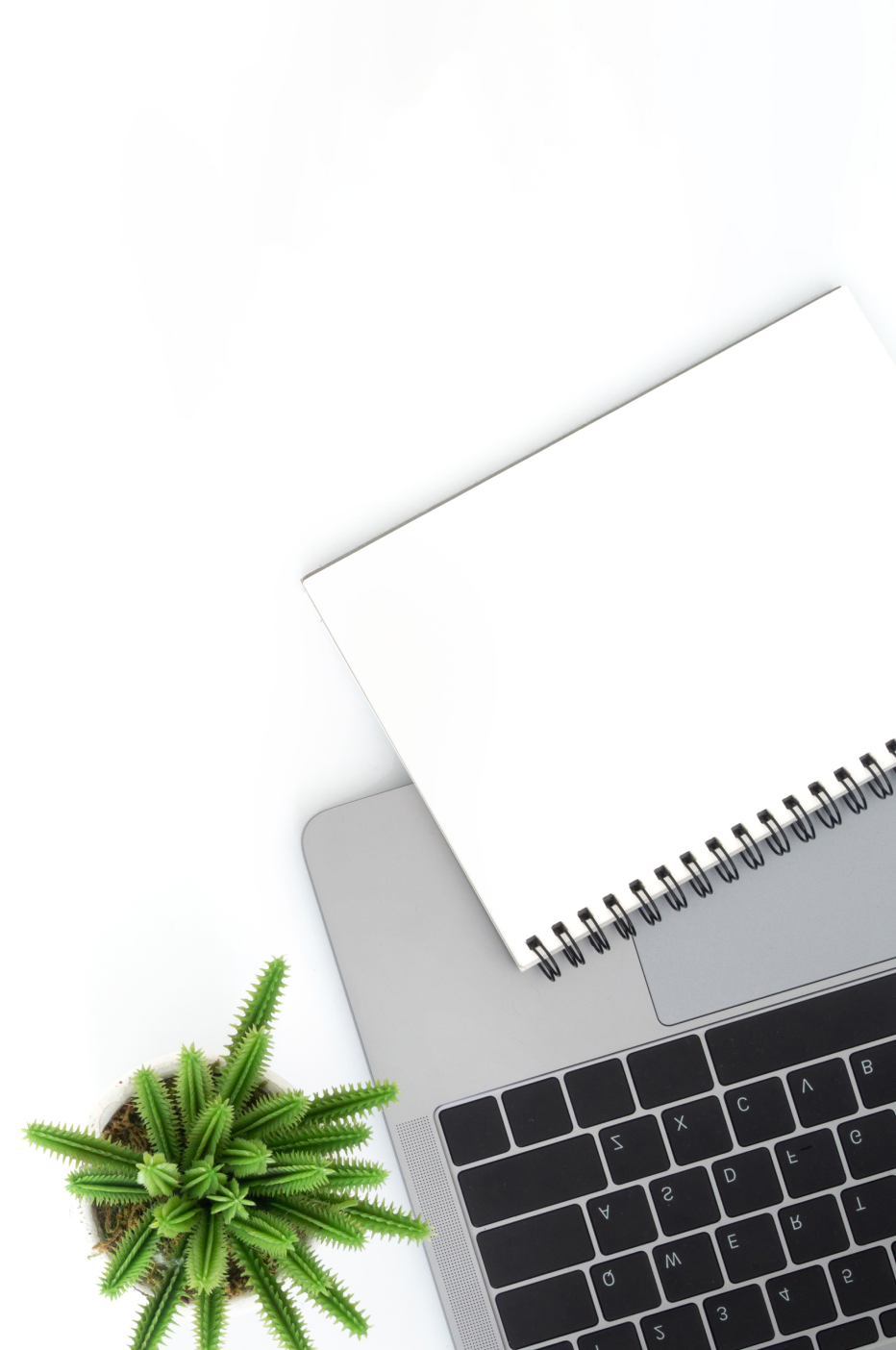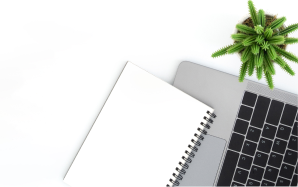Product Design Program

Get a free Product
Design short course
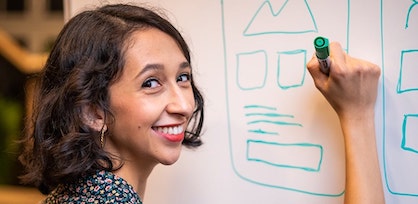
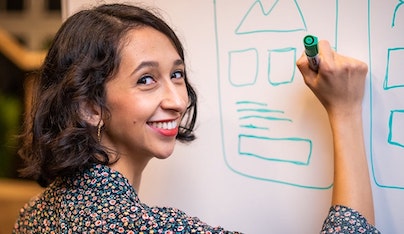
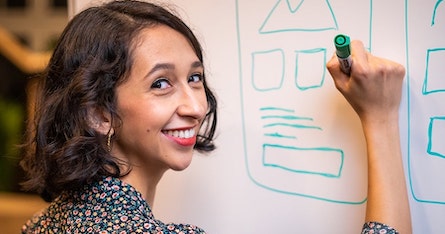
Get a free Product
Design short course
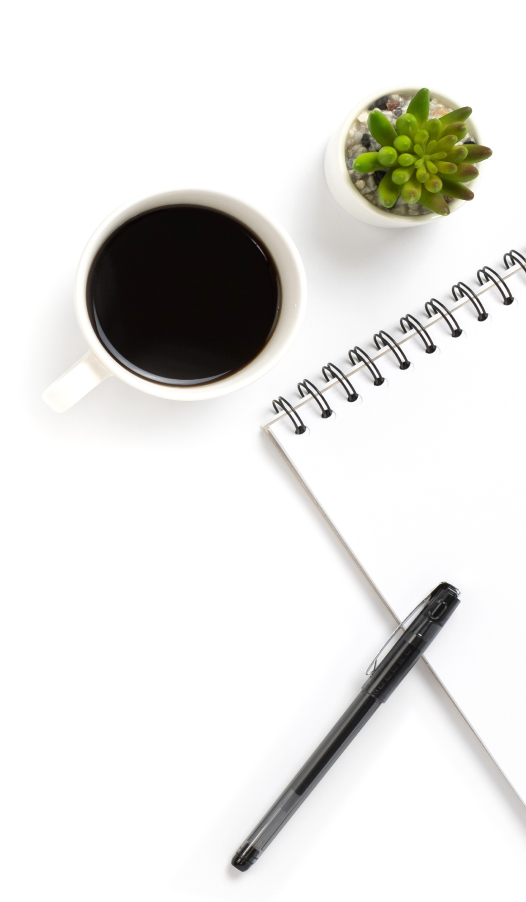
Curious about this program?
Contact us to find out if it’s right for you
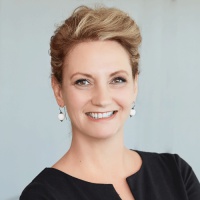
“How would you like to get in touch?”
“I’m here to help you become a product designer”
Alana, Senior Program Advisor
Curious about this program?
Contact us to find out if it’s right for you

“How would you like to get in touch?”
“I’m here to help you become a product designer”
Alana, Senior Program Advisor
Our graduates now have tech jobs all over the world



Overview
Get in touch with usThe Product Design Program
Your launchpad into a career in product design
Gain a rigorous education in designing for the user, and learn how to build prototypes, work with AI, and refine a design for handoff—all with lifetime curriculum access after graduation
Build the technical skillset of every great product designer, adopting tools for wireframing and prototyping such as Figma, Marvel, InVision, and more
Work with a team of active industry experts offering 1:1 mentorship on every assignment and project review, including a capstone project you’ll use to conquer your local job market
Find your industry passion through a specialization course, deciding between Frontend Development for Designers, Voice User Interface Design, or UI for Designers
Earn real-world work experience with a stand-out portfolio and the chance to gain hands-on apprenticeship training with our partners: TechFleet, Democracylab, & Digital Product School
Launch into the world of product design and land the role you want with 1:1 career specialist guidance to build a competitive application package and job search strategy, all in our Career Support Center
Starting every two weeks
Learn online 30–40 hours/week for 5 months or 15–20 hours/week for up to 10 months
Top-quality mentorship
Our product design mentors are seasoned industry experts with a 4.94/5 rating
Support from start to finish
Enjoy the Job Preparation Course with career coaching included
What makes product design the right career?
You’ll have a diverse skillset
As a product designer, you’ll wear multiple hats. You'll study users' preferences and needs closely. By blending thoughtful design with data-driven insights, you'll collaborate effectively, ensuring users and team members understand and align with the product vision.
Every industry values great product design
Even with the advent of AI and layoffs in major tech companies, the demand for product design roles remains strong. According to the Bureau of Labor Statistics, the digital design role is expected to grow by 16% across the U.S over the next decade, and you can find product design jobs in nearly every industry—not just tech.
You’ll be merging creativity with flexibility
Choosing a career in product design means more than just innovative work. It promises the adaptability of remote or hybrid settings, financial advantages, and the joy of meaningful projects. Graduates go on to earn more, as well as enjoy more time for loved ones and hobbies at home.
What makes CareerFoundry the right school?
We’re the proven path to professional success
Since 2013 we’ve helped 7000+ career changers move from diverse backgrounds like teaching, taxi driving, or opera singing to tech professionals. Our model of industry-driven curriculum, flexibly-paced learning, and expert mentorship ensure graduates land careers they love.
Learn on your schedule, backed by our Job Guarantee
Study flexibly by choosing your own timeline. Immerse yourself in the curriculum, and build your portfolio around your other commitments. Work with your advisor on job coaching and land your first role within six months of graduation or your money back—that’s the Job Guarantee.
Our graduates stand out with cutting-edge skillsets
We’re constantly evolving our curriculum to be industry relevant. Including projects on the pulse of market trends and the role of AI in your new career. Our curriculum team works closely with industry experts to ensure success—and our 90% graduate placement rate reflects that.
Product Design Program Curriculum
A rigorous and industry-relevant education built with beginners and upskillers in mind
Skills-focused
Every aspect of the curriculum is designed for you to cultivate the most in-demand skills. From hard skills like user research and testing, to the soft skills of teamwork and communication between users and product stakeholders—you’ll graduate well-rounded and job-ready.
Rigorously practical
Learn with a project-based curriculum that takes you beyond theory and into immersive tasks that will directly reflect the kind of work you’ll do on the job. Put everything you learn to immediate, practical use through hands-on projects you’ll build your extensive portfolio around.
Expert-written
Our instructional designers and editors work with skilled subject matter experts to write and continually update learning materials to teach the most cutting-edge content. Through mentorship and demonstrable project work, you’ll have the knowledge and skills needed to get hired.
Curriculum overview
1 month
5.5 months
2 months
0.5 - 1 month
3.5 - 5.5 months
1 - 2 months
0.5 months
3.5 months
1 month
Completion times are approximations based on the progress of our current students and graduates
Learn the fundamentals of product design in eight steps. You’ll learn the theory behind product design and complete a practical exercise as you go: designing a vocabulary-learning app.

1.1 Introduction to Product Design & Design Thinking
Set the foundation for the rest of your learning and kick off the first stage of your course project.
1.2 User Research
Explore user research methods and conduct a series of user interviews.
1.3 User Personas
Learn how to tell user stories and create a proto-persona for your course project.
1.4 Information Architecture
Analyze how people navigate sites and how information is structured.
1.5 Wireframing & Prototyping
Create detailed prototypes and wireframes for your vocabulary learning app.
1.6 Usability Testing
Devise a usability testing plan to ensure your design solutions are effective.
1.7 Presenting Your Work
Present your design process and results to stakeholders in an engaging manner.
1.8 What’s Next?
Draft your design profile to map out where your design education will go from here.
This course provides a deeper dive into the daily practice and mindset of a professional product designer. You'll complete a total of six achievements, which will build off of each other to create a final product at the end of the course.

Achievement 1
Achievement 2
Achievement 3
Achievement 4
Achievement 5
Achievement 6
Thinking like a Product Designer
Make design thinking a daily habit and apply it as you kickoff the project that you’ll complete over the next five achievements. Here’s what you’ll learn:
The Role of the Product Designer
A History of Product Design
Human Needs & Motivations
User-Centered Design Process
Design Thinking
Understanding the Problem
Competitive Analysis
Lean UX vs. Agile UX
Business Requirements
User Stories
Portfolio Review
Understanding the User
Through user research and analysis, you’ll create effective user personas and journey maps, conduct a thorough task analysis, define an actionable mobile strategy for your product, and create a visually appealing and portfolio-ready site map. Here’s what you’ll learn:
Research Methods
Surveys & Interviews
User Research Analysis
User Personas
Mental Models & User Journeys
Task Analysis & User Flows
Cross-Platform Optimization
Content Auditing
IA Principles & Frameworks
Refining Your Sitemap with Card Sorting
Portfolio Review
Prototyping & UI Fundamentals in Design
You’ll learn all the skills and fundamentals to create a prototype of your design. You'll explore the foundations of UI design, learn to build a Design System, and go from low fidelity sketches to high fidelity clickable prototypes using Figma. Here’s what you’ll learn:
Navigation for Mobile & Desktop
Design Patterns for Mobile & Desktop
Usability Heuristics & Interaction Design
Visual Design Principles
Low-Fidelity Prototyping with Figma
Conceptualizing and Selecting a Design
Grid Fundamentals
Mid-Fidelity Wireframes & Prototyping
Design Systems
High-Fidelity Wireframes & Clickable Prototypes
Portfolio Review
Usability Testing
You’ll conduct usability testing for both mobile and desktop from start to finish, working with test subjects, analyzing test results, making improvements, and planning future tests. Here’s what you’ll learn:
Best Practices for Working with Human Test Subjects
Usability Test Methods
Usability Test Plan
Usability Test Script
Conducting Usability Tests
Usability Test Results & Planning for Future Tests
Reporting Findings & Making Recommendations
A/B & Preference Testing
Portfolio Review
Refining a Design for Handoff
You’ll ensure your design meets accessibility guidelines and is emotionally engaging for all users. Then you'll ready your design documentation for a developer handoff. Here’s what you’ll learn:
Designing for Accessibility
Emotional Design for User Engagement
HTML Basics
Alternatives to HTML: Native Platforms
Responsive Frameworks
Design Documentation
Design Deliverables
Design Collaboration
Portfolio Review
End-to-End Design
You’ll compile all your design iterations up to this point and make final fixes to your design. You’ll also work on publishing your online portfolio and creating a video demo of your work. Here’s what you’ll learn:
Agile Design Process
Designing for Good
Online Portfolios
Design Communities
Video Presentation
Portfolio Review
Refining a Design for Handoff
You’ll ensure your design meets accessibility guidelines and is emotionally engaging for all users. Then you'll ready your design documentation for a developer handoff. Here’s what you’ll learn:
Designing for Accessibility
Emotional Design for User Engagement
HTML Basics
Alternatives to HTML: Native Platforms
Responsive Frameworks
Design Documentation
Design Deliverables
Design Collaboration
Portfolio Review
End-to-End Design
You’ll compile all your design iterations up to this point and make final fixes to your design. You’ll also work on publishing your online portfolio and creating a video demo of your work. Here’s what you’ll learn:
Agile Design Process
Designing for Good
Online Portfolios
UX Communities
Video Presentation
Portfolio Review
To further develop your expertise, you’ll choose one of three specialization course options: Voice User Interface Design, or Frontend Development for Designers, or UI for Designers.

Voice User
Interface Design
Achievement 1
Achievement 2
Frontend Development for Designers
Achievement 1
Achievement 2
UI for Designers
Achievement 1
Achievement 2
Introduction to Voice Design with Alexa
Explore the origins of voice, discover the unique user populations and use cases for voice, then get to know Amazon’s Alexa and build a skill for the interface.
Getting Started with Your Voice Design Course
History & Appeal of Voice
Use Cases for Voice
Personas for Voice
How Alexa Voice Interactions Work
Building Your First Skill
Working with AWS Lambda
Certifying Your Skill
UX Design Principles for Voice
Find out how to create user stories, dialogs, flows, and scripts, as well as how to test your designs. You’ll also explore some advanced topics.
User Needs & User Stories for Voice
Sample Dialogs
User Flows for Voice
Voice Scripts
Context & Memory in Voice Design
Usability Testing for Voice Interactions
Multimodal Interactions
Accessibility & Voice
Safety & Privacy for Voice Design
Intro to Product Design
Learn the fundamentals of product design in eight steps. You’ll learn the theory behind product design and complete a practical exercise as you go: designing a vocabulary-learning app.
1.1 Introduction to Product Design & Design Thinking
1.2 User Research
1.3 User Personas
1.4 Information Architecture
1.5 Wireframing & Prototyping
1.6 Usability Testing
1.7 Presenting Your Work
1.8 What’s Next?
Product Design Immersion
Immerse yourself into the mindset, processes, and tools that product managers use every day. In this course, you’ll complete a total of four Achievements, consisting of several tasks each.
Understand Your Product & Align the Team
Dive into the product development process by compiling the first version of a Product Requirements Document (PRD)—aligning team members and stakeholders on shared goals.
-
Understanding Company Vision
-
Understanding Your Stakeholders & Decision Makers
-
Understanding Your Product
-
Creating Product Principles
-
Aligning Project Timelines & Budgets
-
Creating a Product Roadmap
Initiate Research & Define Solutions
Navigate, organize, and conduct user and market research. Learn to carry out ideation and solution definition before analyzing, articulating, and synthesizing the information you’ve gathered in the form of product solutions.
-
Conducting Valuable Research
-
Organizing Research & Data
-
Conducting Effective Analysis
-
Articulating Information
-
Generating & Prioritizing Ideas
-
Defining Product Solutions
Validate & Refine the Idea
Create prototypes, Minimum Viable Products (MVPs), and a proof of concept as needed. Finish compiling your Product Requirements Document (PRD) and get ready for development.
-
Defining the Product Manager’s Role During Product Validation
-
Prototyping & Testing
-
Designing Iterations & User Feedback
-
Developing Minimum Viable Products & Proof of Concept
-
Finalizing Your Product Requirements Document (PRD)
-
Preparing for Development
Launch & Iterate
Learn how to manage stakeholders and teams during launch, define success metrics, collect data, and review your product metrics and customer feedback.
-
Managing Effectively During Development
-
Capturing Product Metrics
-
Aligning Stakeholders & Teams
-
Preparing for Product Launch
-
Completing Post-Launch Activities
-
Strategizing for Product & Self
Specialization
To further develop your expertise, you’ll choose one of three specialization course options: Voice User Interface Design, UI for UX Designers, or Frontend Development for Designers.
Voice User Interface Design
Learn how to design voice user interfaces and develop three “skills” for Amazon’s Alexa voice assistant. You’ll complete a total of two projects (achievements) consisting of several tasks each.
UI for UX Designers
Explore visual design trends and best practices, image theory, iconography, and interaction design. You’ll complete two projects (achievements) consisting of several tasks each.
Frontend Development for Designers
Learn how to code with HTML and CSS, and debug and use JavaScript to add interactivity to a website. You’ll complete two projects (achievements) consisting of several tasks each.
Learning with AI
Our programs have recently been updated with AI content to ensure you stay up-to-date with the latest trends and technologies. That includes being ready to use AI tools and techniques on the job when you graduate.
With useful exercises, best practices, and brand-new learning material about AI, you’ll learn how to use AI in a way that is reflective of how real-world tasks are approached in the industry, while still building the core skills of your new profession.
Your mentor and tutor will teach you to use generative AI and large language models (like ChatGPT) to become more effective in your work, and you’ll learn how to use AI tools and techniques critically and ethically so that it supports you professionally, rather than replaces you.


Get exclusive hands-on work experience
- ✓ Gain real-world product design experience and apply for one of our partner apprenticeships
- ✓ Build a portfolio based on real-world projects, including an optional bonus project
- ✓ Forge a stand-out applicant profile built on portfolio work, end-to-end capstone projects, industry exposure, and demonstrable expertise you can point top employers to
- ✓ Build your soft skills on external work experience placements and partner with other product managers, marketers, engineers, data scientists, and developers
The Tech Fleet apprenticeship exceeded all my expectations! CareerFoundry’s education really complements the practical experience, where you work in cross-functional teams and with real clients.
Attend your first product management event
Join free events and skills workshops to explore product management with industry professionals! Bring questions to the Q&A, gain insider knowledge, and take the first step in your future career.
Join free, online events with leading product managers. Bring your questions for our experts!
Success Stories
Our students go on to launch challenging new careers in the tech industry
From Print Publishing to Digital Design: How I Retrained To Stay Relevant in a Changing Industry
Data for Social Good: Why I Chose To Learn Data Analytics (and How the Edie Windsor Scholarship Made It Possible)
From Community Manager to Software Developer: How I Found My Niche in Web Development
From Sales Executive to UX Designer at the BBC: How I Landed My First Job in the Industry
How I Became a Product Designer in 9 Months
From Barista to Data Analyst: How I Transformed My Career In Less Than 6 Months
From Tech Support To Programming: How I Finally Turned My Lifelong Passion Into A Career
Our graduates now work at...



Product Design Program admission criteria
What you need:
The motivation to transform your career
Even though you can study flexibly, the program requires some commitment, as it takes a minimum of 15–20 hours per week to complete in 10 months.
An interest in product design
If you're already reading books and blog posts about different types of product design, that's a great start.
If you are unsure if product design is really for you, get a free consultation with one of our program advisors, who will give you personal feedback on which direction to go based on your interests and goals.
Additionally, you'll need:
Written and spoken English skills at a B2 level or higher
A computer (macOS, Windows, or Linux) with a webcam, microphone, and an internet connection
Please note to enroll in the Product Design Program you must book a call with a program advisor.
What you don’t need:
A background in product design or tech
This program is designed to take you from beginner to job-ready—regardless of your background. And now more than ever, employers see boot camp graduates as excellent job candidates. A 2021 study by Career Karma found that companies as respected as Amazon, Google, Facebook, and Microsoft are some of the largest employers of boot camp graduates. The study also revealed that in 2020 those same companies hired up to 120% more bootcamp graduates than they did the year prior!
Unlimited free time
You can study part-time at 15–20 hours per week to finish the program within 10 months, or complete the program in as little as 5 months by studying up to 30–40 hours per week.
To learn all on your own
You can enjoy the flexibility of online learning with the accountability and one-on-one attention traditionally associated with brick-and-mortar institutions. Much like a college professor might inspire you to pursue a career in a certain field, your mentor, tutor, career specialist, and student advisor will keep you motivated and on track.
Price and payment options
Pay upfront
Get 5% off your tuition when you make a one-time, upfront payment.
upfront, then for months
Pay monthly
Pay today to secure your place, and then per month for months.
Pay upfront
Get 5% off your tuition when you make a one-time, upfront payment.
upfront, then for months
Pay monthly
Pay today to secure your place, and then per month for months.
FAQ
In short, yes—there’s a high demand for qualified product designers. The digital design role is expected to grow by 16% across the U.S over the next decade, and you can find product design jobs in nearly every industry—not just tech.
Curious about what salary you could earn? Check out our product design salary guide.
This program is designed with the absolute beginner in mind. Meaning, there are no prerequisites or prior experience in design or tech required.
Regardless of age or background, we’ve built a learning experience to ensure your success. From the catered curriculum and hands-on exercises to one-on-one mentorship and support throughout.
What’s required*:
- Motivation to transform your career
- Interest in product design
- Written and spoken English proficiency at a B2 level or higher
- A computer (macOS, Windows, or Linux) with a webcam, microphone, and an internet connection
For the Intro to Product Design Course, you’ll mainly use Marvel, in addition to others. For the Product Design Immersion Course, you’ll mainly use Figma.
As a CareerFoundry student, you’ll qualify for free access to the Figma Professional Plan.
You will also be using other tools to help you refine your designs. These tools will be available with a free trial or with a discount, which can be found on CareerFoundry’s Perks page. For further tool requirements related to specialization courses, please view their respective pages:
As this varies widely, we recommend checking individual system requirements on Figma's website.
For further system requirements related to specialization courses, please view their respective pages:
Yes, the program is entirely asynchronous and online—so you can study when and wherever you’d like so long as you can get online and stay on track for graduation.
But this doesn’t mean the learning experience is isolated or lonely! You’ll have regular contact with your mentor, tutor, student advisor, and career specialist—as well as full access to our active student community on Slack.
The program is flexibly-paced within a 10-month duration. There are two deadlines along the way that we’ve put in place to help keep you on track for graduation.
Expect to devote a minimum of 15-20 hours per week to graduate within that maximum time frame. This is considered part-time study, and matches the default pacing of the program. If you’d like to graduate in as little as four months, you can devote 30-40 hours per week to reach that goal.
The Product Design Program offers you a complete career change package—including expert-authored curriculum, hands-on projects, personalized mentorship, and career coaching. Find out more here:
- How it works: From curriculum details to your career change team, and beyond—here are the details.
- Meet our mentors: Get to know who the CareerFoundry mentors are and how the dual-mentorship model works.
- Career services: Everything you need to know about our personalized career coaching, Job Preparation course, Career Support Center, alumni community, and more.
- Graduate outcomes: Here’s some of the work our graduates did in the program—and where they’re at today.
In addition to all of this, you can request read access to our course library—so you can study other corners of the tech world independently, with all the course materials included in your program tuition! You can ask your student advisor about this once you start the program.
Yes, we offer two payment options. You can save 5% of your total tuition by paying it up front. Alternatively, you can pay a set amount up front to reserve your place in the program, and the remainder in 10 monthly payments (regardless of when you graduate from the program).
Still not feasible for you? Book a call with a program advisor to see if you’re eligible for a customized payment plan.
While we do offer an ongoing tuition reduction to active U.S. military personnel and veterans, as well as periodic, partial scholarships/tuition reductions, we do not offer any full scholarships or funds at this time.
If you’d like to learn more about any of these offers, please reach out to a program advisor.
If you’re not happy with the program in the first 14 days from the start date, you can simply cancel for a full refund.
If you are 60% or less of the way through the program duration (not including any extensions) and need to cancel for any reason, you may be eligible for a prorated refund. For more information, see our full terms and conditions.
You will receive a signed CareerFoundry certificate when you complete the program. This will make it easy for you to share your new qualification on LinkedIn and with potential employers or clients.
There are conditions that graduates need to meet in order to be eligible for the job guarantee. We’re transparent about these requirements because we want them to be easy for you to follow and because we know they genuinely help graduates succeed in their job search.
You’re eligible for the job guarantee when:
- You’ve successfully completed 100% of your CareerFoundry program as well as our free Job Preparation course.
- You’re applying to at least five relevant jobs a week.
- You live in a metropolitan area with a population above 200K people in any of the following countries: USA, Canada, European Union or EFTA countries, UK, Australia, or New Zealand (or you’re willing to relocate).
- And when you meet other qualifying criteria. Please read the full terms and conditions.
If you have any questions about the job guarantee or the eligibility criteria, simply book a call with a program advisor—they’re happy to help!
Based on the program’s comprehensive curriculum, you’ll be ready to apply for and step into a junior product design role or mid-level product design position.
Keep in mind that many job ads for product designers ask for 2+ years of experience, but it is often part of their "wishlist" rather than a requirement.
If you have transferable skills from your previous career, it’s possible to land a more senior role. Your dedicated career specialist (during the Job Preparation Course) will help you understand your transferable skills and craft the right narrative to present in your job application materials.
If you have additional questions, we’re happy to help! Just email us or book a call with a program advisor and we’ll get you the answers you need.
How would you like us to contact you?
Book a time to speak with a program advisor
Send us a message


What questions do you have about the program? We're happy to help.
Thank you!
Our program advisor will be in touch with you shortly.
Still window shopping?
We’ve handpicked blog articles for your viewing pleasure.
